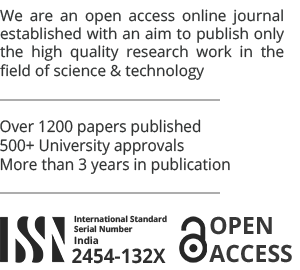Low Cost Solar Powered Smart Management System for Indian Farming
Published by: Nirdosh Kumar, Mrs. Shimi S.L
Full DetailsAnother Way to Deal with Research Privacy in the Iot: Threats and Assaults on Iot and its Solutions
Published by: Mr. Zishan Ali I. Dakhani, Mr. Mujamil M. Dakhani
Full DetailsEnhanced False Coloring in Medical Image Processing
Published by: Aditya Sharma, Maninder Kaur
Full DetailsEngland In Tamil Nadu- An Innovation for Quality Teaching and Learning English Language
Published by: K. Vijayalakshmi
Full DetailsICT in Teaching English Language in Rural Government Schools
Published by: K. Vijayalakshmi
Full DetailsStudies on Optical Properties of ZnS Thin Film by Thermal Evaporation Technique
Published by: Harish Kumar D C, Dr. H M Mahesh
Full Details
